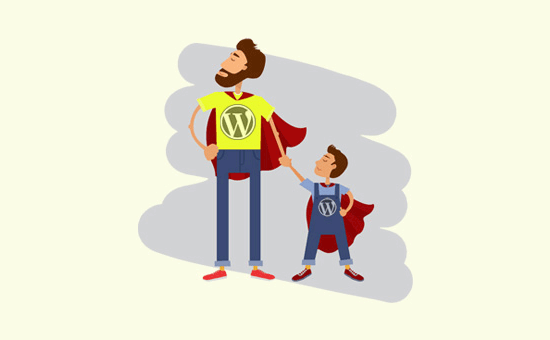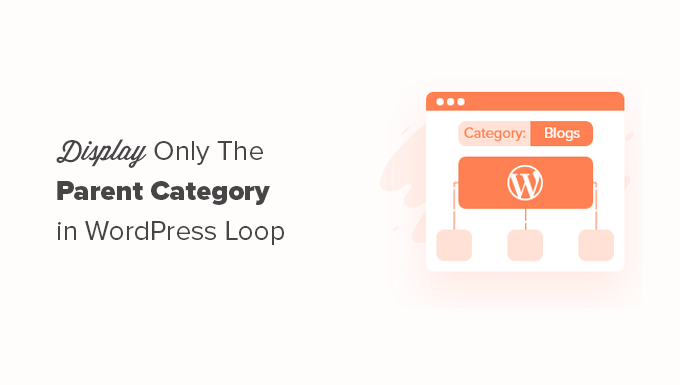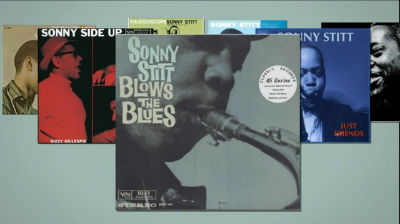Are you seeking for a strategy to highlight your most significant blog entries at the top of your website so that visitors may see them first?
WordPress defaults to displaying your most recent posts first. As you upload additional content, your earlier posts will be pushed to the bottom of the page and eventually archived.
What if, on the other hand, you wanted to keep your pillar articles on the front page for a longer period of time?
That’s where the sticky posts function in WordPress comes in helpful.
A sticky post is one that stays at the top of your blog page for a long time. Unlike regular postings, it remains sticky on your blog’s home page until you remove it.
In only two steps, we’ll teach you how to create sticky posts in WordPress.
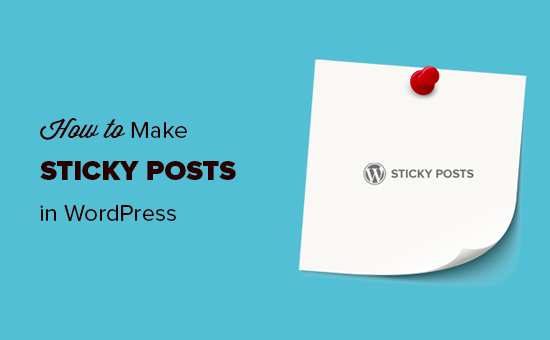
When Should You Use a Sticky Post in WordPress?
A sticky post is primarily used to draw attention to the most significant content on your blog. This allows you to highlight your greatest posts on the top page of your blog, regardless of when they were published.
You can pin two different sorts of material to your blog’s front page.
1. Your Blog’s Best Content (Pillar Articles)
The most crucial material on your website is pillar articles. In-depth articles, thorough guidelines, and your most popular pieces all go into this category.
They’re the most effective approach to get new people to visit your blog, create leads, and increase page views. To ensure that new readers can find these articles, you should highlight them throughout your website.
For example, you might have a lengthy article that goes into great detail on a specific topic. This type of post will be really beneficial to your users, and you may wish to place it near the top.
2. Time-relevancy of critical content
Time-sensitive posts, such as product updates, announcements, and sweepstakes, are another form of post you might wish to make sticky.
If you’ve announced a major product update on your blog, you’ll want your users to be able to view it right away. Similarly, if you’re hosting a month-long giveaway, you’ll want everyone to see it before it ends.
You can then replace them with new sticky posts after their time relevance has elapsed.
After that, let’s look at how to make your posts sticky in WordPress.
In two easy steps, you can make your WordPress posts sticky.
WordPress has a built-in feature that allows you to pin any post to the top page. This feature is supported by all standard WordPress themes, and the sticky post will be highlighted on the front page or blog page.
To begin, either edit or create a new post that you want to make sticky.
Look to the right-hand sidebar of the post-edit screen, where you’ll see your document settings. First, select the ‘Status and Visibility’ option.
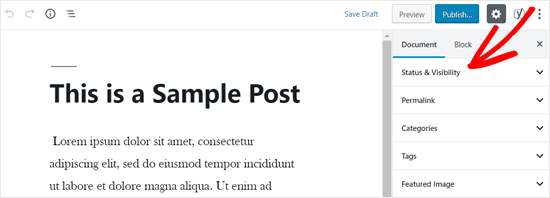
‘Stick to the Front Page’ will now be a checkbox option. To make a post sticky, simply check the box, then save or publish it.
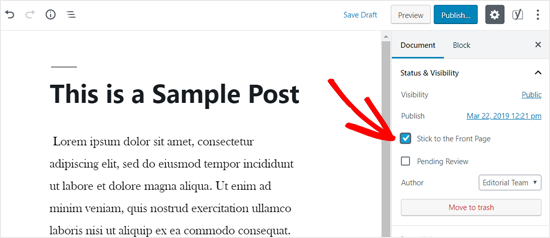
That concludes our discussion. Until you remove the check, your post will remain on the front page of your site.
If you wish to make an older article sticky, simply repeat the steps above and save.
You can also use the Quick Edit tool to make older posts sticky.
Simply go to your dashboard’s Posts » All Posts tab and search for the relevant post title. Then, beneath it, select the ‘Quick Edit’ option.
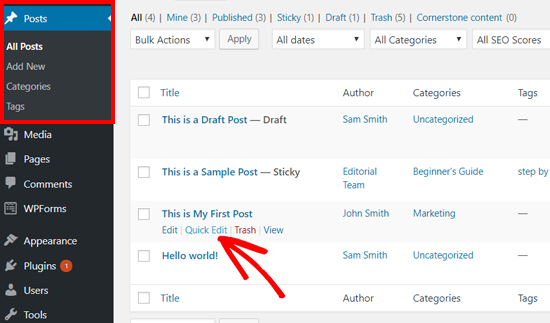
The rapid edit options will appear after that, including a sticky post checkbox at the bottom of the right side. Check the box and then hit the ‘Update’ button below.
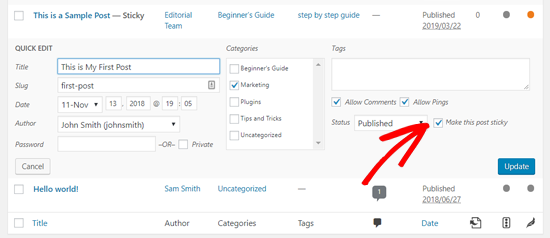
This method can also be used to make unpublished manuscripts sticky once they are published.



